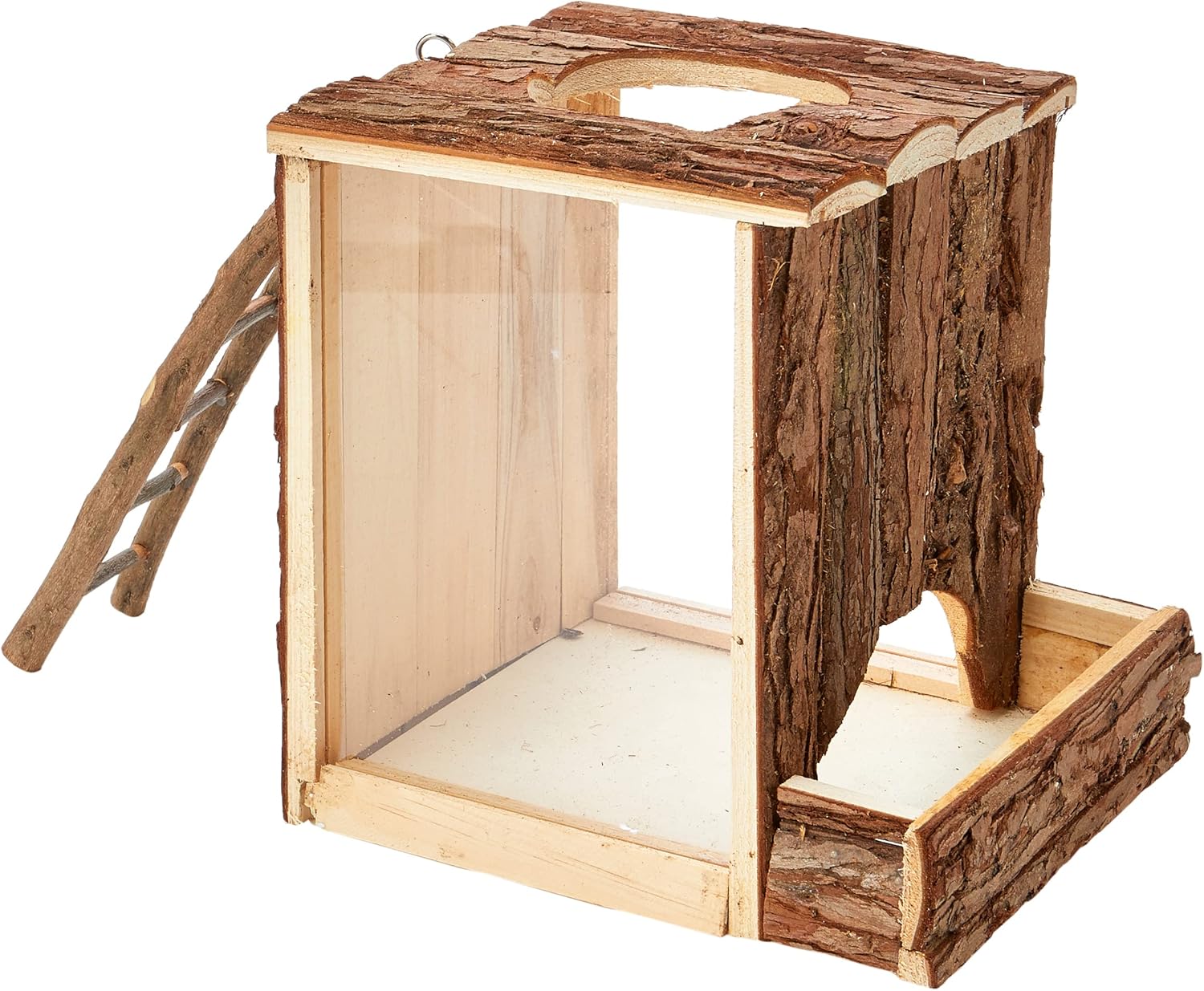
Trixie Large Wooden Digging Tower for Pet Hamster, 25 × 24 × 20 cm
FREE Shipping
Trixie Large Wooden Digging Tower for Pet Hamster, 25 × 24 × 20 cm
- Brand: Unbranded

Description
Monitor an older hamster’s body temperature, ensuring it remains warm enough to be comfortable. Do Hamsters Burrow When They Die? Paper bedding options are affordable for hamsters and are nice and soft for them to interact with (they’re more sensitive to texture than other rodents). You can mix it with another sort of substrate with a different texture, such as aspen or hay, to better hold tunnels.
Soft hay – hay is a great addition to any of the beddings above, and will help add extra structure and stability to your hamster’s burrows. Choosing an appropriate container is crucial to ensure your hamster’s comfort and safety while digging. Opt for a shallow plastic bin or a glass terrarium with low walls to prevent your hamster from escaping. Make sure the container is spacious enough for your hamster to move around comfortably. A minimum of 12 inches by 8 inches is recommended, but the larger, the better. Ensure that the container is escape-proof and free of any sharp edges or protruding objects that could harm your hamster. You can tell hamsters that don’t have access to sand just from photos and initial handling. Providing access to a sand bath is vitally important to hamster welfare, but it is something that is frequently overlooked. Hamsters are generally easy keepers, but that doesn’t mean they can’t get bored sitting in the same environment day in and day out. If you have a hamster, you will want to ensure that he or she is receiving the mental and physical stimulation necessary to thrive. In the wild, hamsters make burrows, climb and walk for miles each day, so their living space needs to be large enough to allow them to behave as naturally as possible. Most hamster cages sold in shops aren’t big enough to even meet a hamster’s most basic needs, so instead, we recommend providing them with a much larger space, such as an extra-large cage, glass tank, or home-made enclosure. Wherever you choose to house your hamster make sure it has the following:
Scented bedding: Hamsters have an extremely strong sense of smell, and artificial fragrances in scented bedding can irritate their noses and lead to respiratory issues or allergies.
Add bedding or other burrowing material, whichever you choose and is safe for your pet. Some hamster owners like to use the (unscented) tissues that came in the tissue boxes in the first place.Biology Letters confirms that captive hamsters, especially Syrians, are invariably nocturnal, which will be reflected in their behavior. Any sudden behavioral change is more concerning. While burrowing isn’t essential to survival in a captive hamster, the activity won’t cease without an explanation. Not Enough or The Wrong Substrate Hamsters don’t need to be cleaned out very often. An ethical minimum cage size of 5000 sq. cm (775 sq. inches) can be easily left for a month, if toilet areas are spot cleaned as needed. Setups that are bigger still can last 3-6 months between cleanouts depending on details of the size and layout.
For Syrian hamsters, this typically comes down to 12 inches of bedding, while Chinese and dwarf hamsters do best with no less than 10 inches of bedding. Whether you have the budget for an elaborate enclosure or simply the time for some supervised outside play, these are simple ways to allow your hamster the ability to explore and exercise. Read on for the details on each of these enrichment opportunities. Best Hamster Enrichment Ideas Burrowing And Climbing If a partition isn’t possible, you can create a secondary enclosure that facilitates their burrowing behavior. You will have to remove them from their cage to this second enclosure when you want them to have some quality burrowing time. This isn’t ideal, as hamsters should be able to burrow at their leisure, so consider finding a way to connect the two enclosures so that your hamster can burrow to his or her heart’s content. DIY Burrowing Boxes
Where to put your hamster’s home
This is becoming a more popular substrate option, as it allows for a more naturalistic set-up. However, it is important to note that most coir (which is sold for gardening and reptile-keeping) is moist in the bag, which is detrimental to hamster health. Therefore, if using this, it is important to dry the material out properly before putting it in the cage.
Hamsters love taking sand baths, and if you don’t already have one in your hamster’s enclosure, it is a simple and inexpensive addition to make. A sand bath will consist of a shallow and heavy-bottomed dish and, of course, sand.Aspen, spruce or hemp bedding – similar to sawdust/wood shavings but made from hardwood and dust free. However, they aren’t great at supporting burrows, so you’ll need to add a paper-based bedding for extra stability. A third option is to place a designated “burrowing bin/box” in the hamster’s existing cage. This can easily be done with something like a tissue box. There are many tutorials online as to how to do this, so while the instructions below may not fit your style, you will likely find a step-by-step guide to constructing your own burrowing box that does. Creating a Custom Burrowing Box With buried tunnels and things, I like to do a bit of a mixture. Tunnels at diagonals can be good with sort of one end poking up and looking inviting. Weird-shaped boxes and bits of flat cardboard staggered into the substrate at intervals can be good too, like a sort of subterranean roof. Their bed/nest is very important for hamster mental wellbeing so don’t disturb their beds too often as it will stress them out.
- Fruugo ID: 258392218-563234582
- EAN: 764486781913
-
Sold by: Fruugo
